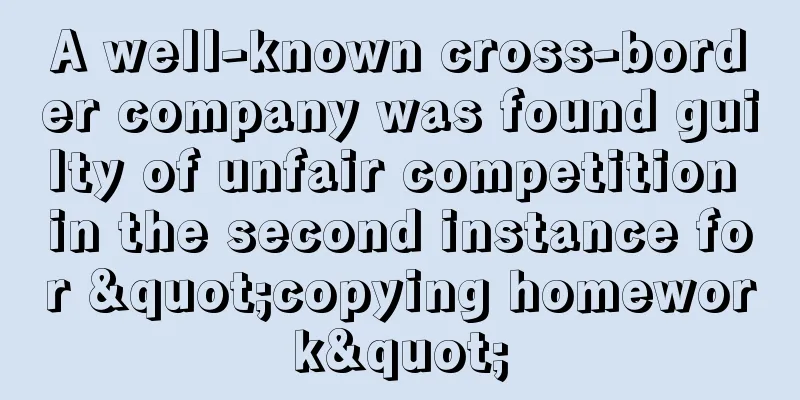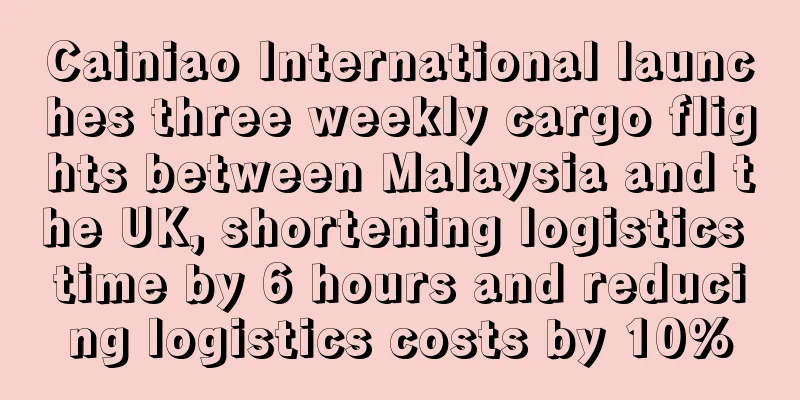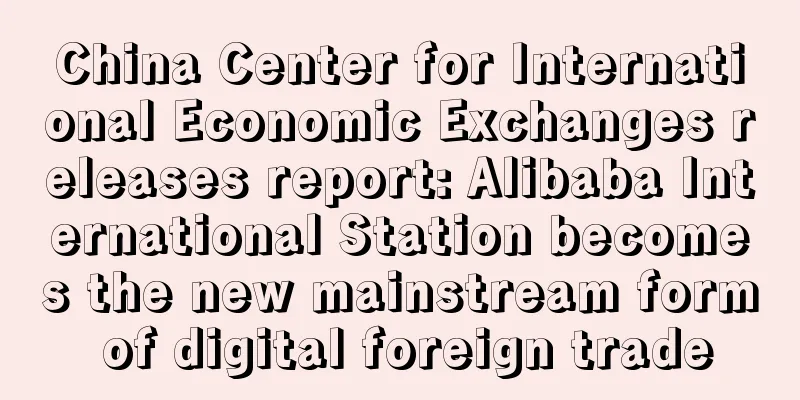A well-known cross-border company was found guilty of unfair competition in the second instance for "copying homework"

|
According to the monitoring data of "Dianshubao", there were 19 financings in China's cross-border e-commerce field in 2023, with a total financing amount of about 2.03 billion yuan. Most of these companies that received financing are cross-border e-commerce service providers. Among them, service providers represented by SaaS companies have frequently won the favor of the capital market and become a hot spot for investment.
Today, SaaS companies are developing rapidly with the help of capital, but there are also some problems hidden behind this rapid development, such as the plagiarism dispute case that has attracted widespread attention recently.
The interface is highly similar, and the leading enterprise sued its peers for plagiarism.
In the cross-border e-commerce SaaS software market, SaaS ERP companies are undoubtedly at the center of the stage. This is because, whether it is a platform seller or an independent website seller, management software such as SaaS ERP that reduces costs and improves efficiency is a rigid demand product.
As a senior cross-border e-commerce seller lamented: "Now almost everyone has to use ERP, otherwise they will lose a lot of profits and reduce efficiency."
The cross-border ERP system is equivalent to the "data manager" of cross-border e-commerce companies. It plays an important role in operations, including reducing enterprise management costs, improving employee work efficiency, and digitally managing companies to standardize enterprise operations.
Nowadays, there are many cross-border ERP systems in the cross-border circle, and each ERP has its own advantages and highlights. However, under the seemingly calm surface, there are also many undercurrents surging.
Not long ago, the Shenzhen Intermediate People's Court 's second-instance judgment on the SaaS ERP company Dian Xiaomi brought these undercurrents to the forefront.
It is reported that earlier, Lingxing Network Technology Co., Ltd. discovered that the Saihu ERP software developed and operated by Shenzhen Dianxiaomi Network Technology Co., Ltd. and Shenzhen Meiyunji Network Technology Co., Ltd. plagiarized its Lingxing ERP software, so it took the two to court.
The Shenzhen Intermediate People's Court, the second-instance court, held that, from the perspective of copyright law, the interface of Lingxing ERP software does not constitute a work of art in the sense of copyright law. However, from the perspective of anti-unfair competition law, when Saihu Software was launched in 2021, Lingxing ERP software had complete functions and innovative interface interaction experience. It had a high reputation in the industry and was known to the relevant public. It had accumulated good reputation and had established a certain connection with Lingxing's business operations. It could bring competitive advantages and competitive benefits to Lingxing Company, which was a fair competition right protected by the anti-unfair competition law.
Therefore, the court determined that Dianxiaomi and Meiyunji were free-riding on the goodwill accumulated by Lingxing, infringing its fair competition rights, disrupting the honest and fair market competition order, and jointly constituting unfair competition. The two parties need to jointly compensate Lingxing for its economic losses and reasonable expenses for rights protection.
Sellers who have been deeply involved in the cross-border e-commerce industry will certainly be familiar with Lingxing. As the leader of cross-border e-commerce ERP management systems, Lingxing has attracted many sellers and is also a darling of capital, having received multiple rounds of financing.
In February this year , China E-commerce Service Center released the "Top 100 Chinese E-commerce Service Providers in 2023", and Lingxing became one of the eight SaaS cross-border e-commerce service providers on the list. At the same time, 36Kr's "2023-2024 Chinese Enterprises Overseas Development Research Report" was also released that month. With its typical development and industry recognition, Lingxing was successfully selected as a typical case of Chinese enterprises going overseas in 2023-2024.
Statistics show that Lingxing has currently served over 500,000 cross-border e-commerce companies and has established localized service centers in more than 20 cities across the country. Its service capabilities cover the entire country and it holds a leading position in the cross-border e-commerce ERP field.
The anti-infringement horn has been sounded. Dare to say "no" to unfair competition
Plagiarism is nothing new in the software field, and it is becoming more and more serious.
Last year, data released by the Beijing Intellectual Property Court showed that in the past nine years of hearing computer software civil cases, the Beijing Intellectual Property Court has accepted more than 5,000 civil cases involving computer software copyrights and concluded more than 4,000 cases. The number of cases concluded has been on an upward trend for a long time.
In cases involving infringement of computer software works, there are often difficulties at multiple levels in protecting rights.
On the one hand, it is difficult to collect and fix evidence. Among them, obtaining source code is a major difficulty. Source code is the key evidence to prove software copyright, but usually, the infringer will not easily disclose its source code. Another issue is the legality of evidence collection. In the process of collecting evidence, if the evidence collection method adopted by the rights defender is illegal, such as unauthorized intrusion into the other party's system to obtain evidence, then the evidence will not be recognized by the court, and the rights defender may even bear legal responsibility for it.
On the other hand, the identification of infringement is complicated. For example, the criteria for determining substantial similarity are unclear. Determining whether two softwares are substantially similar is the key to determining infringement, but currently in judicial practice, there is no unified conclusion on the criteria for determining substantial similarity. It is also difficult to define functional similarity and infringement. Because the function of the software is one of its core values, but functional similarity does not necessarily mean infringement.
Therefore, this judgment has extremely positive significance for the entire domestic software market:
The winning verdict has created a strong deterrent effect on companies or individuals who engage in plagiarism, making them realize that plagiarizing other people's software will not only lead to legal sanctions, but also require them to bear corresponding economic compensation responsibilities, thus reducing the occurrence of plagiarism.
The winning cases have shown software developers and enterprises that, under the Chinese legal environment, investing time, energy and resources in original software development can be effectively protected without worrying about their innovative achievements being easily copied, thereby encouraging them to actively carry out innovative activities and promote technological progress and product upgrades in the software industry.
Enhanced legal awareness. This winning case has set a precedent for intellectual property protection in the software industry, helping to raise the entire industry's attention to intellectual property protection and legal awareness.
Promote healthy competition. Under the standardized market competition order, enterprises will focus more on improving the quality, performance and user experience of software products, meet market demand by continuously optimizing products, and thus promote the healthy development of the entire software market.
Competition should return to the product itself and continue to innovate
According to the monitoring data of "Dianshubao", in 2021, there were 50 financings in the field of Chinese cross-border e-commerce service providers alone, with a total amount of more than 7.15 billion yuan. Among them, more than 18 occurred in the ERP field, accounting for more than 36%.
By 2023, affected by the overall economic environment, there were 19 financing events in the entire cross-border e-commerce field, but 4 of them were in the SaaS ERP segment, accounting for more than 21%. If the scope is narrowed to the cross-border e-commerce service provider field, the proportion will be even greater.
This fully reflects the favor of capital for the SaaS ERP track. The influx of a large amount of funds provides sufficient development resources for enterprises in this field. However, it should be made clear that capital is not the only competitive advantage of business, and the same is true in the SaaS ERP field. More financing does not mean that you can be ahead of others in the track. In the end, it still comes down to the product.
On the surface, a large amount of capital injection can bring many advantages to SaaS ERP companies. Adequate funds can help companies carry out large-scale market promotion and quickly increase brand awareness. It can also attract top talents in the industry and build a strong R&D, sales and service team. Through the power of capital, companies can expand their scale and seize market share in a short period of time. But this is just a beginning, not the key to victory.
When we deeply analyze the essence of the SaaS ERP industry, we will find that products are the key factor that determines the survival of enterprises. Especially in the fierce market competition environment, products are the key to enterprises building differentiated competitive advantages. Unique product design, excellent product quality, innovative product functions and other aspects can make the company's products different from competitors and attract consumers' attention.
Based on this, the competition between SaaS ERP companies at this stage should return to the product itself, and continue to innovate and explore in multiple dimensions such as functions, performance, and user experience. In this process, plagiarism should be avoided, because plagiarism can only follow the original creator and it is difficult to create its own unique competitive advantage. At the same time, it is easy to touch the legal red line, and it is even more difficult to establish brand loyalty. |
>>: Amazon is trying out a "new policy" to reduce sellers' costs!
Recommend
Middle Eastern e-commerce company Jazp launches new payment option, joining the "buy now, pay later" battle
Last year, a large number of Middle Eastern consu...
The latest Amazon TOP 100 sellers ranking, new sellers on the list!
As the world's largest e-commerce platform, A...
What is Xisuda Cross-border E-commerce Logistics? Xisuda Cross-border E-commerce Logistics Review, Features
As a professional cross-border integrated logistic...
What is Furrytail? Furrytail Review, Features
Founded in 2018, Furrytail is a pet products bran...
Cainiao Group and Moutai Logistics Sign Strategic Agreement to Carry Out Omni-channel Supply Chain Cooperation Globally
On December 19, the strategic cooperation signing...
What is Rory? Rory Review, Features
Rory is an online sales website where medicine and...
Successful transformation! Domestic trade OEM has become the leader of Shopee
China's domestic trade market is full of vola...
What is Giteki? Giteki Review, Features
Japan's Radio Law clearly stipulates that all...
Meikeduo Big Sales: The secret of increasing sales from 0 to 10 million in half a year
Today we are sharing the great sales story of Mr....
A large number of sellers saw a decline in sales before PD!
The “darkness” before Member’s Day . Since 2023, ...
What is Mobisummer? Mobisummer Review, Features
Mobisummer relies on the world's leading big d...
What is Orami? Orami Review, Features
Founded in 2016, Orami is an e-commerce platform s...
Canadian truck drivers riot, supply chain problems continue to worsen!
The vaccine restrictions introduced by the Canadi...
What is Marvell? Marvell Review, Features
Marvell offers a broad and highly innovative port...
What is Lotte International? Lotte International Review, Features
Founded in 1999, Lotte International has more tha...









